Upon the birthdate of photographer Diane Arbus, I am drawn to the memory of my visit to "Revelations," an exhibit of her work at the Metropolitan Museum of Art in 2005. I was twelve years old, wide eyed, and curious. My mother, ever the American cultural enthusiast, eagerly jumped at the chance to attend the exhibition. I, of course, was her date to the museum. I remember very clearly a massive, black and white self portrait of Arbus dominating the entrance to the exhibit. White street lights hovered around her head -- a reminder of the haunting, lonely urban landscapes that constitute much of her work.
Standing face to face with the stark black and white photos hanging on the whitewashed walls of the museum, I stared into faces that at once intrigued and terrified me. Those faces have never left me; it was as if they burned indelible images onto my sponge-like young mind. The "Identical Twins," who in any other circumstance would appear cute, are rendered utterly eerie in their identical dresses and divergent facial expressions (I would learn later on they inspired the twins in Stanley Kubrick's The Shining). The "Young Man in Curlers" who holds a slender cigarette in a hand adorned with manicured nails, stared directly into my eyes. "Who was he? What was he talking about? Was he talking to me?" I asked myself. And, of course, I could not help but stare at the arresting naked bodies of the "Nudists." "Were there people who actually go about their business in the nude?" I wondered.
Years later, as a college student, I revisit her works and still ponder the same questions and gasp at the psychological insight Arbus captures through her medium. I almost want to look away; it is as if I am intruding upon the private spaces of these individuals, prying into a private moment of sadness and disappointment. Yet, Arbus forces us to look and engage with her subjects. It astonishes me how powerful the photographs remain, despite my generation's bombardment with 3-D films, Skype conversations, and video games so realistic I cannot help but feel a sense of guilt after offing a fellow player. And, yet, the silent, black and white faces of Arbus' world affect me now as much as they did upon my initial viewing. I am shocked, disturbed, and utterly moved.
What Arbus realized (and what makes her work so powerful), is the inherent power of the human face. It is so easy for us today to become distracted by iPhones, Facebook, and text messaging, that face to face communication becomes rushed and, at times, obsolete. Yet, when we pause and stare into the fixed expressions of Arbus' subjects, we cannot help but recoil, gasp, and even cry in the presence of these images. Why? Because Arbus's work forces us to cease our constant 21st century buzzing about and face our fellow human beings in all of their glory, agony, loneliness, and heartache. By staring into the faces of these people, we cannot help but see ourselves in so many of the faces. We sympathize with the "Girl with a cigar" who stares forlornly into space because we have been there, too. And we recoil at the "Tattooed Man at a Carnival" because his intense, unflinching gaze shatters any protective shield we attempt to guard ourselves with, whether it be a smart phone or a pair of dark designer sunglasses. He stares not only into our eyes; he gazes into our innermost soul.
Although blaming my initial shock and surprise to the photographs on my young age would seem appropriate, I cannot help but look to Arbus' oeuvre itself as a result of my reactions. Yes, seeing these images as a twelve year old was shocking; yet, each time I gaze into the faces of Arbus' subjects I feel that initial response I felt all those years ago. Viewing the work of Diane Arbus is akin to diving into a cold pool; you know what to expect every time, and, yet, you cannot help but feel that shocking sensation each time you engage.
Arbus would have turned ninety on March 14, if her life was not cut short by suicide. Whether you classify her work as great art or agree with Norman Mailer who once said, "Giving a camera to Diane Arbus is like giving a hand grenade to a baby," Diane Arbus is indisputably one of America's most recognizable, polarizing, and unnerving photographers of all time. And you don't have to be a twelve year old to experience the bewilderment, shock, and awe which accompanies viewing the work of Diane Arbus; that, my friend, is included with the price of admission.
